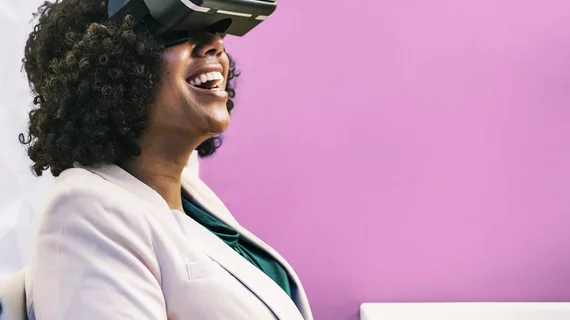People trained to perform CPR with a virtual reality tool were able to achieve comparable chest compression rates as those trained face-to-face in a recent randomized study—but the VR approach still has a long way to go.
There’s no question that the U.S. suffers from poor rates of CPR certification and bystander intervention, Joris Nas, MD, of Radboud University Medical Center in the Netherlands, and colleagues wrote in JAMA Cardiology Nov. 17. Less than half of people who experience an out-of-hospital cardiac arrest get the help they need in time—especially women and minorities— and 90% die even though bystander CPR is known to boost survival rates.
Myriad programs have attempted to solve the elusive CPR training problem, making their way from grade schools to airports to business parks. One study out of Sweden found that bystander CPR for out-of-hospital cardiac arrests increased by 27.4% and survival doubled after the country popularized a chest compression-only approach to resuscitation.
Nas et al. said that in this tech-centered era, VR represents another attractive option for training the masses in CPR. Face-to-face training might be the standard right now, but the authors said VR is emerging as a low-cost, easily accessible method for reaching broader target populations, including younger people.
With that in mind, the researchers studied 381 individuals, on average in their mid-twenties, who visited the science section at the Lowlands Music Festival in the Netherlands Aug. 16-18. Participants were randomized to one of two 20-minute protocols: either face-to-face CPR training or VR training using a smartphone app known as Lifesaver VR.
Lifesaver VR was developed and endorsed by the U.K.’s Resuscitation Council and is included in current CPR guidelines. Once an app that simply taught CPR to its users on a mobile platform, Lifesaver recently introduced a VR enhancement that allows people to immerse themselves in a realistic scene.
“Experts in the field consider VR as one of the most promising tools in medical training in general and CPR in particular,” Nas and co-authors wrote. “Virtual reality training through the app can be performed at home at a low cost at any moment and takes approximately 20 minutes to complete.”
After training, the study’s VR group demonstrated noninferior chest compression rates compared to the face-to-face group—114 compressions per minute versus 109 compressions per minute, respectively. But face-to-face participants beat out their peers in achieving better chest compression depth (57 millimeters vs. 49 millimeters, respectively), and recorded higher overall CPR performance scores (12 vs. 10 on a scale of 1-13).
Nas et al. also found that the cohort trained with the VR app had lower chest compression fractions than those trained face-to-face (61% vs. 67%, respectively), as well as lower proportions of participants fulfilling depth (51% vs. 75%) and rate (50% vs. 63%) requirements. The percentage of compressions with full release was higher in the VR group—98% compared to 88% in the face-to-face group.
“This study confirms the potential of brief face-to-face training to achieve adequate CPR skills and provides valuable input for further development of VR training,” the authors wrote. “Although VR may lead to more widely disseminated CPR training, this study suggests that it should be developed further to achieve CPR skills comparable with those acquired by face-to-face training, particularly in terms of compression depth.”

